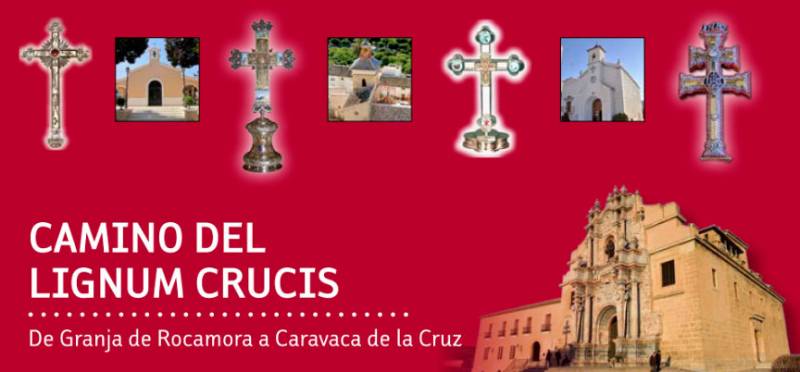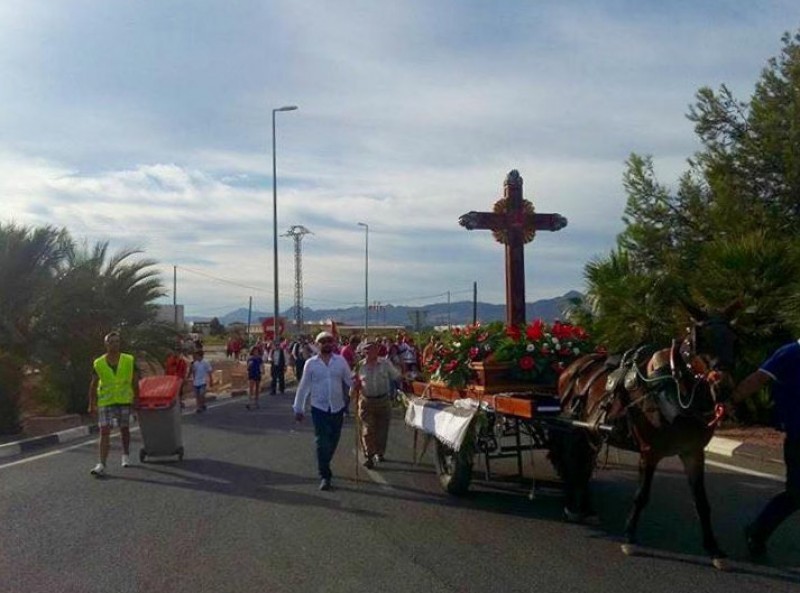- Region
- Vega baja
- Marina Alta
- Marina Baixa
- Alicante
- Baix Vinalopo
- Alto & Mitja Vinalopo
-
ALL TOWNS
- ALICANTE TOWNS
- Albatera
- Alfaz Del Pi
- Alicante City
- Alcoy
- Almoradi
- Benitatxell
- Bigastro
- Benferri
- Benidorm
- Calosa de Segura
- Calpe
- Catral
- Costa Blanca
- Cox
- Daya Vieja
- Denia
- Elche
- Elda
- Granja de Rocamora
- Guardamar del Segura
- Jacarilla
- Los Montesinos
- Orihuela
- Pedreguer
- Pilar de Horadada
- Playa Flamenca
- Quesada
- Rafal
- Redovan
- Rojales
- San Isidro
- Torrevieja
- Comunidad Valenciana
Granja de Rocamora Today

Granja de Rocamora is one of the smallest of the 27 municipalities in the Vega Baja del Segura, in the south of the province of Alicante, occupying an area of only just over seven square kilometres and containing just over 2,500 inhabitants.
It is one of three towns which lie close to the northern and eastern sides of the Sierra de Callosa, one of the rocky  outcrops which punctuate the otherwise flat plain of the Vega Baja del Segura, its nearest neighbours being Cox and Callosa de Segura. At the same time, it is also hemmed in by Albatera, Orihuela and Redován, and is one of the multitude of small municipalities in the north of the Vega Baja. The whole area consists mainly of farmland and native Mediterranean vegetation, as well as the palm trees which prosper in this part of Spain, and Granja is one of the towns in which the population has concentrated over the centuries.
outcrops which punctuate the otherwise flat plain of the Vega Baja del Segura, its nearest neighbours being Cox and Callosa de Segura. At the same time, it is also hemmed in by Albatera, Orihuela and Redován, and is one of the multitude of small municipalities in the north of the Vega Baja. The whole area consists mainly of farmland and native Mediterranean vegetation, as well as the palm trees which prosper in this part of Spain, and Granja is one of the towns in which the population has concentrated over the centuries.
In general terms the town has escaped the proliferation of residential tourism developments which occupy other parts of the Vega Baja close to the Mediterranean coast, and in fact the latest official population figures list only 69 EU nationals living in the municipality (2019). Most of the non-Spaniards here are north Africans who are drawn by the availability of work in the agriculture sector.
This agricultural activity is a common factor throughout the fertile flood plain of the Segura, and needless to say the local gastronomy depends heavily on the produce grown here and on the fish and seafood brought ashore on the coast.
The main monuments in the town are the parish church, which is devoted to San Pedro Apóstol and was built in the 18th century, and the “Torre Mora”, a tower which once formed part of a series of defensive fortifications but which has now been incorporated into a privately owned property. Outside the church is a sculpture of a cross, a reference to the fact that Granja de Rocamora is one of the town which lay claim to a “lignum cruces”, a fragment of the “True Cross” on which Christ died which has been authenticated by the Catholic Church.
Both the mountains and the flat plain of the Segura also attract plenty of walkers and climbers, and while the Sierra de Callosa may not be the highest in the area, reaching a maximum altitude of 578 metres above sea level, over 1,500 hectares are protected as a municipal nature reserve.
The reasons for the town needing defensive fortifications have, of course, long since disappeared, and nowadays Granja de Rocamora is a small, relatively quiet town in the countryside of southern Alicante.
 However, it is located next to the A-7 motorway which follows the whole of the Spanish Mediterranean coastline, and the planned AVE high-speed rail line to Murcia includes a station just a couple of kilometres away at Cox/Callosa de Segura, and this proximity to the main arteries of communication in south-east of Spain ensures not only the cities of Murcia to the south-west and Alicante to the north-east as well the beaches of the southern Costa Blanca to the east are within easy driving distance, but also that the volume of fresh fruit and vegetable exports remains high.
However, it is located next to the A-7 motorway which follows the whole of the Spanish Mediterranean coastline, and the planned AVE high-speed rail line to Murcia includes a station just a couple of kilometres away at Cox/Callosa de Segura, and this proximity to the main arteries of communication in south-east of Spain ensures not only the cities of Murcia to the south-west and Alicante to the north-east as well the beaches of the southern Costa Blanca to the east are within easy driving distance, but also that the volume of fresh fruit and vegetable exports remains high.
GRANJA DE ROCAMORA





























